For this project, our restorers and framers came together to preserve a fascinating antique butterfly-wing tray, creating a truly one-of-a-kind framed art object. Without preservation and restoration, this cherished family heirloom would almost certainly have continued to deteriorate. Instead, its former beauty is restored and the object is ready to be enjoyed for many more years to come.

The Butterfly Tray
object restoration and conservation and
creating custom display to protect it
As art restorers and picture framers, we are often afforded the opportunity to work with unique pieces of artwork. Such is the case with this antique butterfly-wing serving tray that came to Oliver Brothers in the recent past. The fascinating object consists of many small butterfly wings, laid out in intricate patterns, glued to a backing board and pressed down under glass. The entire piece was set into dark wooden tray with a lighter toned inlay. In need of several significant repairs to restore its beauty and ensure its longevity, this art object required creative restoration and framing solutions. It is also a terrific example of how many of our damaged, yet cherished, items – perhaps ones we have never considered fixing – can be brought back to life by skilled restorers.
Butterfly-wing art was a popular indigenous art form in Brazil and other parts of South America from the late 19th to mid-20th century. Surprisingly, there is little specific information that exists on its origin. However, there are accounts of sailors bringing trays, pictures, and jewelry decorated with butterfly wings home to the United States and Europe beginning in the late 1800s. By the mid 20th century, Americans were regularly enjoying holidays to various parts of Latin America. As a result, many tourists brought this increasingly fashionable artwork back with them – much as we do with oil paintings and various other art forms today.
As for this particular tray, the owner’s father, a Danish Merchant Marine, purchased it in Rio de Janeiro around 1938 as gift for his mother. It embarked on a long journey across the Atlantic, where it resided in Denmark until after World War II. This would not be the last of its travels. Sometime after the war, our client’s grandmother immigrated to the United States with the butterfly tray in tow, eventually taking up residence in Las Vegas. In the hot and dry desert air, the cherished piece stayed for several decades, eventually being passed down to son and, in 2010, granddaughter (its current owner).
Unfortunately, seventy-plus years and thousands of miles of travel took its toll on the once pristine tray. The most obvious problem was that the original adhesive used to secure the wings had dried out, causing many areas to become insecure. In fact, when it arrived at Oliver Brothers, the piece had lost close to 30% of its wings! Beyond this, there were splits in the tray’s wooden handles and the protective layer of glass was severely cracked (a result of shipping the tray cross-country).
The missing wings were certainly the greatest challenge for restoration. New Morpho wings are, after all, difficult and quite expensive to track down – not to mention the ethical issues involved. A creative solution had to be found. After consolidating the remaining loose areas, we began testing different materials to see what worked best. The solution came in the form of a combination of different papers, foils, and in-painting to match the texture and tone of the original wings. Afterwards, the cracked wood was glued and toned, and the broken glass was replaced with ultraviolet-filtering acrylic.
The hallmark of butterfly-wing artwork is the striking iridescent and luminous blue and green tones of the Morpho Butterfly’s wings – they diffract and scatter light, making it appear to change colors. Morphos are a species of butterfly found in the rainforests of the American continent. Over the past century wealthy foreign collectors, fascinated with their exotic color, often sought out these creatures. For instance, it would not have been uncommon to find them in a “cabinet of curiosities” in 19th century America and Europe. In Brazil (and other countries), Morpho butterflies were farmed extensively for use in popular art forms brought on by tourism (like trays). This particular piece has circular patterns of blue Morpho wings surrounded by red, brown, and yellow toned wings of the Monarch and other butterflies.
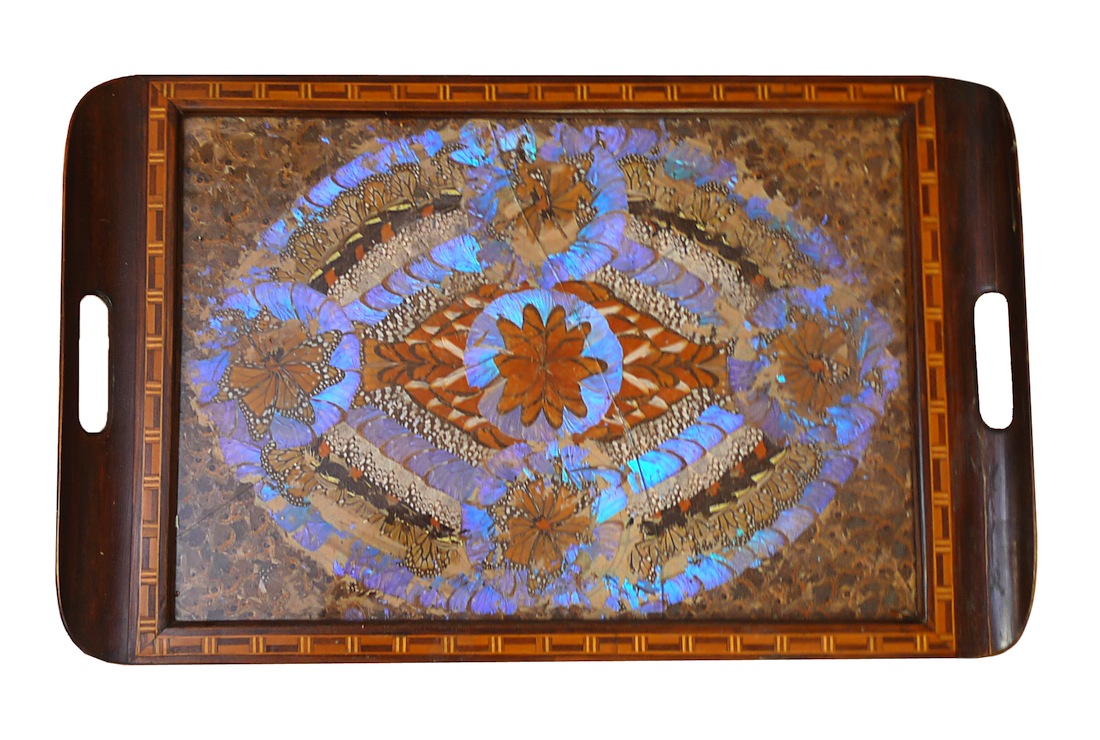
Butterfly Tray before restoration
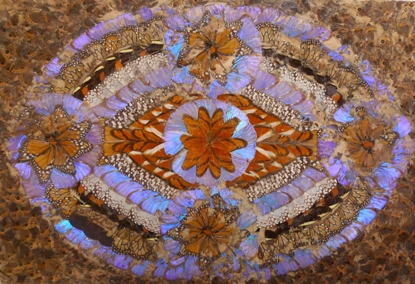
Detail during restoration
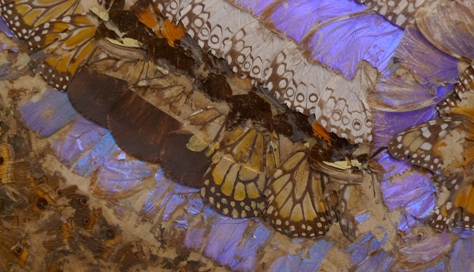
Detail during restoration
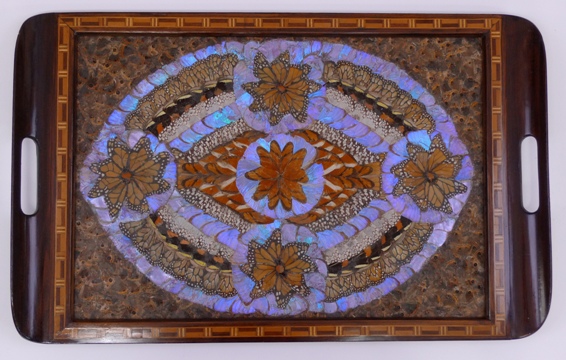
Butterfly Tray after restoration
The piece looked stunning once again. However, there remained the issue of how to display it. The tray needed to rest at an angle for optimum viewing of the spectacular iridescent wings, as well as for its long-term preservation. Although it had hung flat against a wall for many years, having the tray displayed on an angle would help to put less stress on the newly restored butterfly wings. After careful experimentation, a custom display case was chosen and a hand-made metal support system was mechanically secured to the base. The object was then inserted and enclosed under a protective acrylic top.
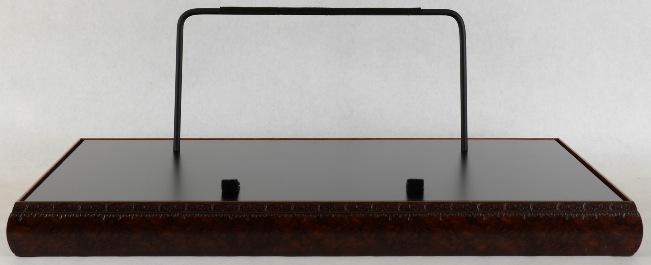
Custom base

Butterfly Tray protected with UV filtering acrylic top

Butterfly Tray in a custom display- side view
Contact Oliver Brothers or call us to schedule an appointment at 617-536-2323
"*" indicates required fields